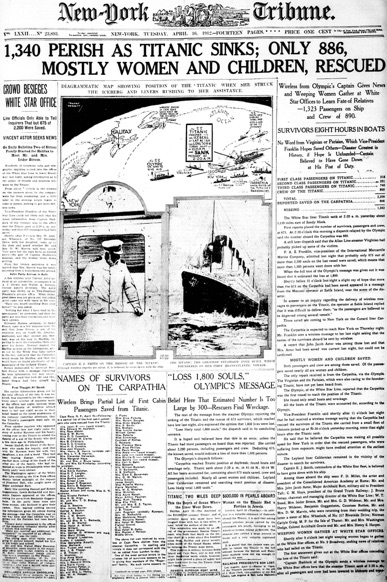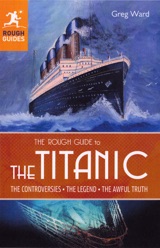
The Rough Guide
to the Titanic


The crucial factor may be that the disaster happened beyond the usual confines of time and space. It took place in neither the old world nor the new, but in a liminal space between the two. Unseen in the witching hour of a moonless night, for the eternity between the collision and the final plunge, the Titanic’s passengers and crew found themselves poised in terror between life and death.
Even as the Carpathia made her way back to New York, the Titanic was entering the realm of myth. During those three days, the only information was a slowly accumulating list of survivors. Newspapers filled the void by extrapolating from snippets. That no husband had survived his wife was interpreted as proof that the conduct aboard the Titanic was a “splendid tribute to the Anglo-Saxon sense of duty”. After a bewildered White Star Line spokesman told reporters that he’d thought the ship was “unsinkable”, it came to be believed that the world at large had shared his opinion.
Over the coming weeks, as the survivors described their experiences, some of the initial stories turned out to be true. Some did not, but remained in the public consciousness anyway.
The tragedy tapped into crucial concerns of the era. What did it mean to be a man, or a woman? What did it mean to be British? It also posed more timeless questions. We all live in the awareness of death, but how should we – and how would we – behave when confronted with its imminent certainty?
for the full story, read the Rough Guide to the Titanic . . .
To read more about the Titanic, click here, or on the links below:
• Did the band play on as the ship was sinking?
• Were the third-class passengers locked below decks, unable to escape?
• If the Titanic was unsinkable, why did she never complete her maiden voyage?

text © Greg Ward, images Library of Congress archives


